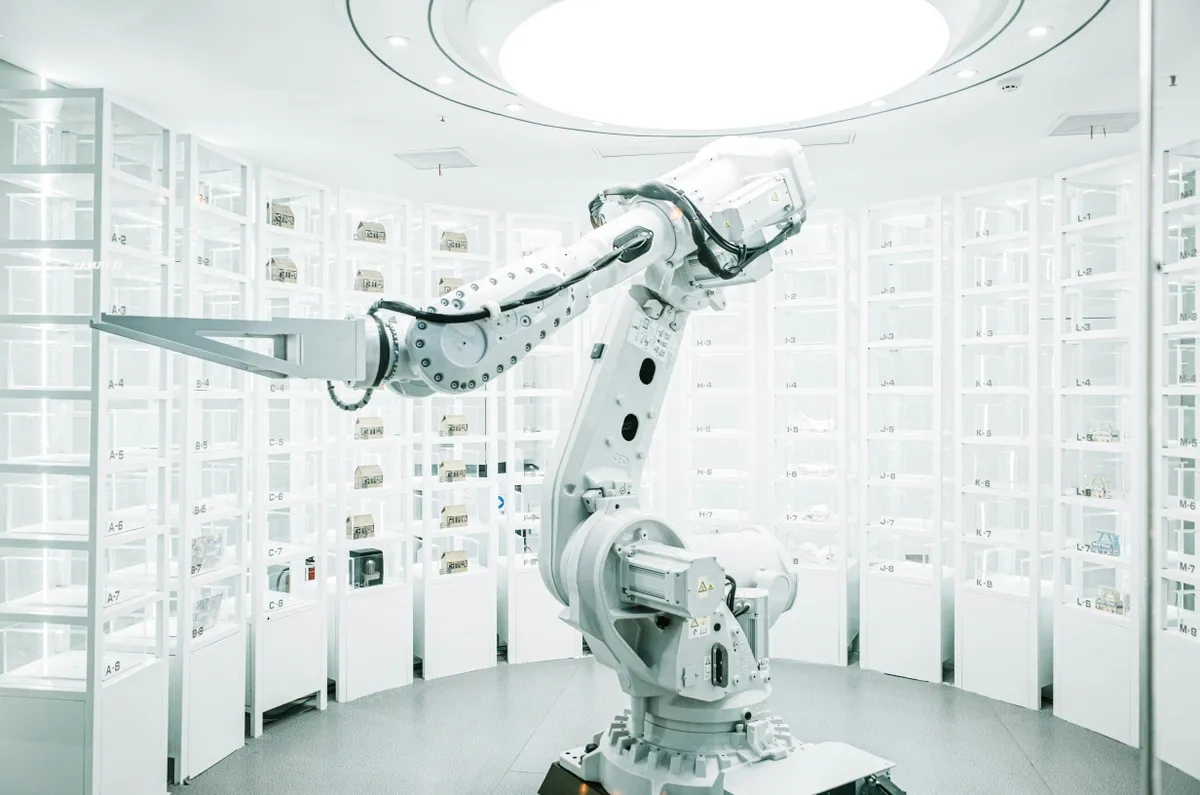
Predictive maintenance, empowered by artificial intelligence (AI), is revolutionizing engineering projects by predicting equipment failures before they occur, thereby significantly reducing downtime and enhancing project efficiency. Unlike traditional maintenance methods that rely on scheduled checks or reactive repairs, AI-driven predictive maintenance utilizes advanced algorithms to analyze data and foresee potential issues, ensuring engineering firms can deliver projects on time and within budget. This technological advancement is becoming indispensable in the engineering sector, driving reliability and optimizing resource allocation.
Understanding Predictive Maintenance in Engineering Projects
Predictive maintenance (PdM) is a forward-thinking strategy that leverages data analysis to foresee and address equipment anomalies before they lead to failures. For engineering projects, this means identifying potential defects early, allowing for timely repairs that minimize maintenance frequency and prevent unplanned outages. By utilizing PdM, engineering firms can avoid the high costs associated with unnecessary preventive maintenance and emergency repairs (source).
Traditional maintenance methods, such as reactive and corrective maintenance, have long been the norm. These methods typically involve responding to equipment failures as they occur or conducting routine inspections and manual record-keeping. While these strategies can keep systems operational, they often result in ad-hoc repairs and significant downtime, disrupting project timelines and increasing costs (source).
In contrast, predictive maintenance uses historical and real-time data from various operational components to anticipate issues before they happen. This approach integrates technologies such as the Internet of Things (IoT), artificial intelligence, and advanced analytics to monitor asset conditions continuously. IoT sensors embedded in machinery collect vital metrics like temperature and vibration, transmitting this data wirelessly to cloud-based systems. Here, powerful machine learning algorithms analyze the data to detect subtle changes and predict potential failures (source).
Key components of PdM systems include IoT sensors, data analytics, and machine learning models. These elements work together to provide actionable insights, enabling proactive maintenance actions. Essential features of predictive maintenance software comprise detailed reports, work order management, and asset tracking. Reports help identify issues in individual assets, while work order management ensures efficient scheduling and task execution. Asset tracking allows continuous monitoring of asset conditions, identifying vulnerabilities and enhancing performance (source).
By adopting predictive maintenance, engineering firms can significantly improve project efficiency, reduce downtime, and optimize maintenance costs, ultimately delivering projects on time and within budget.
The Role of Artificial Intelligence in Enhancing Predictive Maintenance
Artificial intelligence (AI) plays a pivotal role in advancing predictive maintenance by transforming raw data into actionable insights, thereby preemptively addressing potential equipment failures before they impact engineering projects. AI algorithms excel in analyzing vast amounts of data, identifying patterns, and predicting issues that may not be evident through traditional maintenance approaches.
AI-driven predictive maintenance involves several key processes:
- Data Analysis: AI systems sift through extensive datasets, including operational metrics and historical performance records, to uncover patterns that could indicate future equipment failures (source).
- Machine Learning: Machine learning algorithms continuously learn from past data, enhancing their ability to make accurate predictions about when equipment might fail. These algorithms improve over time, becoming more adept at forecasting potential issues (source).
- Real-Time Monitoring: AI algorithms analyze real-time data, comparing it with historical trends to flag anomalies and potential problems. This ongoing analysis provides a 24/7 monitoring system that ensures continuous oversight of machinery health (source).
The benefits of AI-driven predictive maintenance in engineering projects are substantial. AI enhances the reliability and availability of assets by preventing breakdowns, delays, and disruptions. It also improves safety and quality by reducing human errors, accidents, and defects. Additionally, AI helps in optimizing maintenance schedules, reducing waste, and extending the lifespan of equipment, leading to significant cost savings (source).
Several case studies highlight the successful implementation of AI in predictive maintenance. For instance, General Electric (GE) introduced an AI-powered predictive maintenance system that leverages machine learning algorithms to monitor and analyze data from their equipment. By collecting data from sensors embedded in machines, GE’s AI system can detect patterns and anomalies indicative of potential failures. This implementation resulted in reduced downtime, cost savings, and optimized maintenance schedules (source).
In the context of Minute7, the insights gained from AI in predictive maintenance can significantly enhance project efficiency and reliability. Minute7’s robust platform, which includes features like time tracking and expense reporting, complements the AI-driven maintenance efforts of engineering firms, helping them deliver projects on time and within budget.
Implementing AI-Powered Predictive Maintenance in Engineering Firms
Integrating AI technologies into existing maintenance systems can significantly enhance an engineering firm’s ability to predict and prevent equipment failures, ensuring smoother project execution and reduced downtime. Here are the critical steps and considerations for implementing AI-powered predictive maintenance:
Steps to Integrate AI Technologies into Existing Maintenance Systems
-
Data Collection: The first step in implementing AI-driven predictive maintenance is to gather data from equipment using sensors. These sensors measure various parameters such as temperature, vibration, and pressure, providing real-time insights into the health and operational status of the machinery (source).
-
Data Processing and Analysis: Once data is collected, machine learning algorithms process and analyze it to identify patterns that indicate normal versus abnormal behavior. By learning from historical data, these algorithms can predict when a component is likely to fail, allowing maintenance teams to intervene before issues arise (source).
-
Automation and Notification: AI-driven systems can automatically alert maintenance teams to potential problems, providing them with actionable insights. These systems prioritize maintenance tasks based on the severity and impact of the predicted failure, ensuring that critical issues are addressed promptly (source).
Challenges and Solutions in AI Implementation
While AI has the potential to revolutionize predictive maintenance, its implementation can come with several challenges:
-
Data Quality and Availability: Reliable data collection, storage, and integration from multiple sources and formats are crucial. Ensuring data integrity and consistency can be a significant hurdle.
-
Security and Privacy: Protecting sensitive and confidential data from unauthorized access or misuse is a top priority. Implementing robust cybersecurity measures is essential.
-
Analysis and Interpretation: Employing skilled staff and using advanced tools and methods to extract meaningful information from complex data sets is necessary for effective predictive maintenance.
-
Implementation and Adoption: Effective communication, collaboration, and change management are vital to ensure stakeholder alignment and user adoption of new AI-driven solutions (source).
The Future of Predictive Maintenance: Trends and Innovations
The future of predictive maintenance is set to be shaped by several innovative trends:
-
Advanced AI and ML Algorithms: These will offer more accurate failure predictions, thereby enhancing maintenance processes.
-
Edge Computing: This trend is gaining prominence, allowing real-time analysis of sensor data for faster decision-making.
-
Integration of IoT and Cloud-Based Platforms: Expanding integration facilitates remote monitoring and maintenance, further improving efficiency (source).
In conclusion, AI-powered predictive maintenance offers engineering firms a path to reduced downtime, increased uptime, and significant cost savings. By embracing these technologies, firms can enhance project efficiency and reliability. Minute7’s robust platform, which includes time tracking and expense reporting solutions, complements these AI-driven maintenance efforts, streamlining operations and facilitating effective resource allocation.
Maximizing Efficiency with AI-Powered Predictive Maintenance
The integration of artificial intelligence in predictive maintenance represents a significant leap forward for engineering firms aiming to enhance project efficiency and reliability. By leveraging AI-driven insights, firms can preemptively address equipment failures, thus minimizing downtime and optimizing resource allocation. This advanced approach not only ensures the timely delivery of projects but also aligns maintenance schedules with actual needs, reducing unnecessary costs and extending the lifespan of critical machinery.
Implementing AI-powered predictive maintenance involves gathering real-time data through IoT sensors, processing this data with machine learning algorithms, and automating maintenance notifications. Despite the challenges of data quality, security, and user adoption, the benefits far outweigh the hurdles. Firms that successfully navigate these challenges can expect significant improvements in operational efficiency, safety, and cost management.
Looking ahead, the future of predictive maintenance is promising, with advancements in AI and machine learning algorithms, edge computing, and IoT integration poised to further enhance maintenance practices. These innovations will enable even more precise failure predictions and faster decision-making, solidifying the role of AI in the maintenance strategies of engineering firms.
At Minute7, we understand the critical importance of efficient time and expense management in the successful execution of engineering projects. Our platform, with its robust time tracking and expense reporting features, complements AI-driven predictive maintenance efforts. By providing seamless integration with QuickBooks and other accounting packages, Minute7 helps engineering firms streamline their operations, ensuring that projects are delivered on time and within budget. Embrace the future of maintenance with AI and Minute7, and take your engineering projects to the next level of efficiency and reliability.



